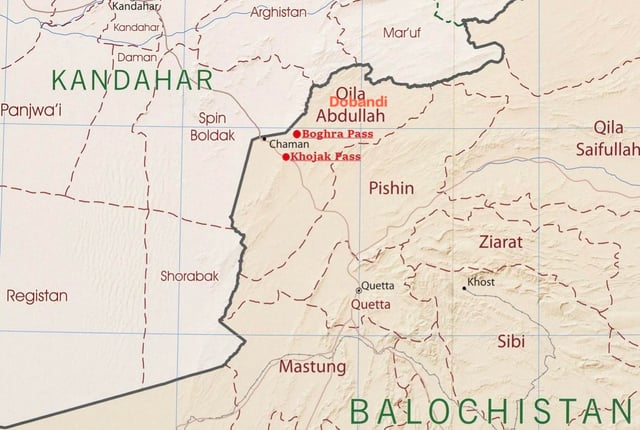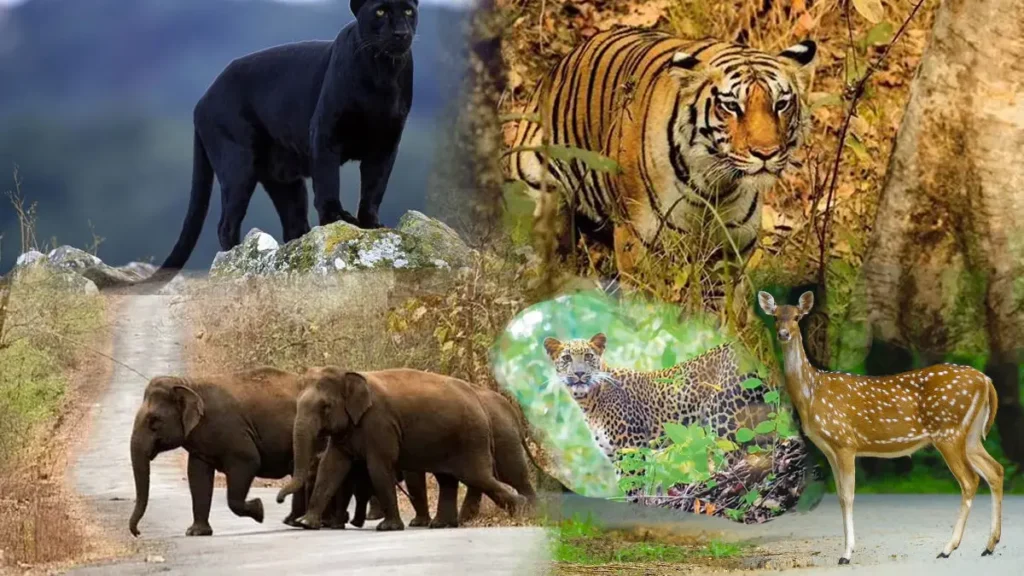1. Overview
Location: Uttara Kannada (North Canara) district, Karnataka
Former Name: Dandeli-Anshi Tiger Reserve (Renamed in 2015 to Kali Tiger Reserve)
Total Area: ~1,100 sq. km
Core Area: ~600 sq. km
Buffer Area: ~500 sq. km
Established: Declared a Tiger Reserve in 2007 under Project Tiger
Managed by: Karnataka Forest Department
2. Geography and Location
Lies in the Western Ghats, a UNESCO World Heritage Site and one of the world’s 8 biodiversity hotspots.
Spread across Haliyal, Karwar, and Joida taluks of Uttara Kannada district.
Rivers flowing through the reserve:
Kali River (main river, lifeline of the region)
Tributaries: Pandri, Tattihalla, Kaneri, Vaki, Nagzari
Altitude Range: 100 m to 600 m above sea level.
Climate: Tropical and humid with heavy monsoon rains.
3. Name and Significance
The reserve is named after the Kali River, which flows through its heart.
“Kali” means “black” in Kannada, referring to the dark waters of the river.
The river is central to the ecosystem — providing water to forests, wildlife, and nearby human settlements.
4. Vegetation and Ecosystem
Lies in the Moist Deciduous and Evergreen Forest zones of the Western Ghats.
Major forest types:
Tropical Semi-evergreen Forests
Tropical Moist Deciduous Forests
Riparian Forests along riverbanks
Dominant flora:
Teak (Tectona grandis)
Bamboo
Terminalia, Eugenia, Lagerstroemia, and Syzygium species.
The dense canopy and high rainfall make it one of the richest ecosystems in southern India.
5. Fauna (Wildlife Diversity)
Flagship Species:
Tiger (Panthera tigris) – apex predator and symbol of the reserve.
Black Panther (Melanistic Leopard) – rarely sighted, but photographed here.
Other Mammals:
Leopard, Elephant, Sloth Bear, Gaur (Indian bison), Wild Dog (Dhole), Sambar Deer, Spotted Deer, Barking Deer, Malabar Giant Squirrel, and Indian Pangolin.
Avifauna (Birds):
Over 300 bird species recorded, including:
Malabar Pied Hornbill
Great Hornbill
Crested Serpent Eagle
Emerald Dove
Drongos, Flycatchers, and Woodpeckers
Reptiles and Amphibians:
King Cobra, Indian Python, Malabar Pit Viper, and several endemic frog species.
Aquatic Life:
Rich in freshwater fish and aquatic insects due to the Kali River ecosystem.
6. Tribal and Local Communities
Home to indigenous communities such as Kunbi, Siddis, and Gowli tribes.
These communities depend on the forest for non-timber forest produce (NTFP) like honey, fruits, and medicinal plants.
Eco-development programmes are underway to reduce human-wildlife conflict and promote sustainable livelihoods.
7. Tourism and Attractions
Key Tourist Spots within and around the reserve:
Dandeli Wildlife Sanctuary (forms part of the reserve)
Anshi National Park (merged to create Kali TR)
Syntheri Rocks – massive limestone monolith on the Kali River
Sathodi Falls, Magod Falls – scenic waterfalls nearby
Kavala Caves – limestone caves with natural rock formations
Activities include eco-tourism, birdwatching, jungle safaris, and river rafting on the Kali River.
Managed by Jungle Lodges & Resorts, under Karnataka Tourism.
8. Conservation Importance
Part of the Western Ghats Landscape Complex, crucial for maintaining ecological connectivity between Goa, Maharashtra, and Karnataka forests.
Acts as a corridor for wildlife movement between Bhimgad Wildlife Sanctuary (north) and Sharavathi Wildlife Sanctuary (south).
Important for the survival of endemic species and Western Ghats biodiversity.
Helps in carbon sequestration, water conservation, and climate regulation.
9. Threats and Challenges
Hydroelectric projects on the Kali River (like Supa, Kodasalli, and Kadra dams) have altered river flow and submerged forest areas.
Mining and quarrying activities in nearby regions affect wildlife corridors.
Roads and rail lines fragment habitats.
Poaching and human–wildlife conflict pose continuing risks.
Tourism pressure needs sustainable management to prevent ecological degradation.
10. Conservation Measures
Declared as a Tiger Reserve (2007) under Project Tiger, ensuring legal protection.
Eco-development committees (EDCs) established for community participation.
Anti-poaching camps and camera traps installed to monitor wildlife.
Relocation of forest-dependent villages from the core zone to reduce human interference.
Continuous habitat improvement and corridor protection initiatives.
11. Administrative Structure
| Component | Details |
|---|---|
| Headquarters | Dandeli |
| Managing Authority | Karnataka Forest Department |
| Field Director | Appointed under the National Tiger Conservation Authority (NTCA) |
| Core Zone | Former Anshi National Park |
| Buffer Zone | Dandeli Wildlife Sanctuary area |
12. Exam-Oriented Key Facts (For Quick Revision)
| Parameter | Details |
|---|---|
| State | Karnataka |
| District | Uttara Kannada |
| Established as Tiger Reserve | 2007 |
| Former Name | Dandeli-Anshi Tiger Reserve |
| Renamed | 2015 as Kali Tiger Reserve |
| Core Area | ~600 sq. km |
| Buffer Area | ~500 sq. km |
| Main River | Kali River |
| Major Animals | Tiger, Black Panther, Elephant, Gaur, Sloth Bear |
| Major Birds | Malabar Pied Hornbill, Great Hornbill |
| Flora Type | Moist Deciduous & Semi-Evergreen Forests |
| Eco-Region | Western Ghats (UNESCO Heritage Site) |
13. UPSC Prelims Practice Questions
Consider the following statements about Kali Tiger Reserve:
It is located in the Eastern Ghats region of Karnataka.
The reserve is named after the Kali River.
It was formerly known as Dandeli-Anshi Tiger Reserve.
Which of the statements given above is/are correct?
(a) 1 and 2 only
(b) 2 and 3 only ✅
(c) 1 and 3 only
(d) 1, 2 and 3
The Kali River, after which the Kali Tiger Reserve is named, flows through which of the following?
(a) Uttara Kannada district
(b) Shimoga district
(c) Udupi district
(d) Chikmagalur district
Answer: ✅ (a) Uttara Kannada district
14. Mains-Oriented Question
Q. Discuss the ecological and conservation significance of Kali Tiger Reserve in the context of Western Ghats biodiversity and sustainable eco-tourism in India.
Answer Structure:
Introduction – location and background
Biodiversity and ecological importance
Role in sustaining the Western Ghats ecosystem
Eco-tourism and livelihood aspects
Challenges and conservation measures
Conclusion – Need for balancing conservation and development








